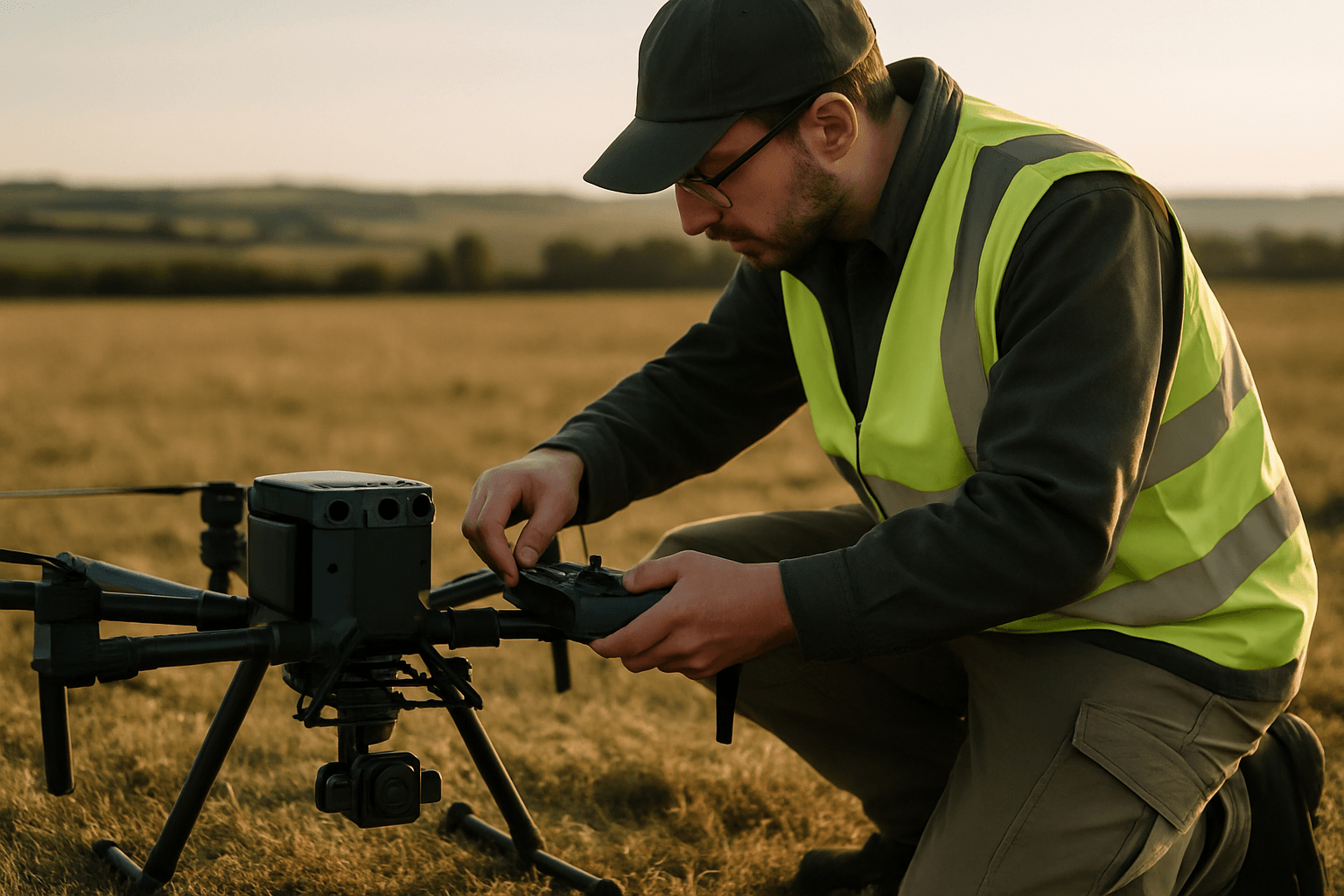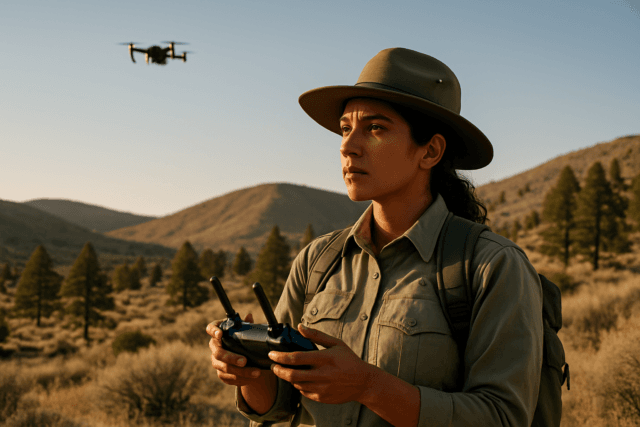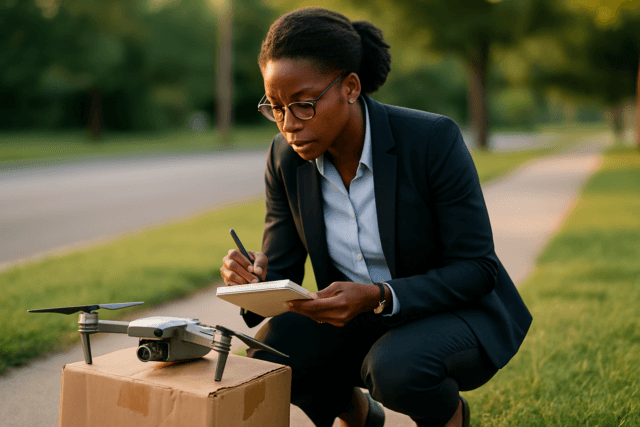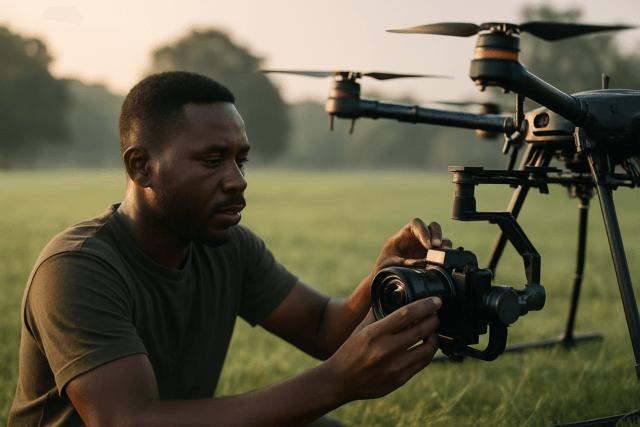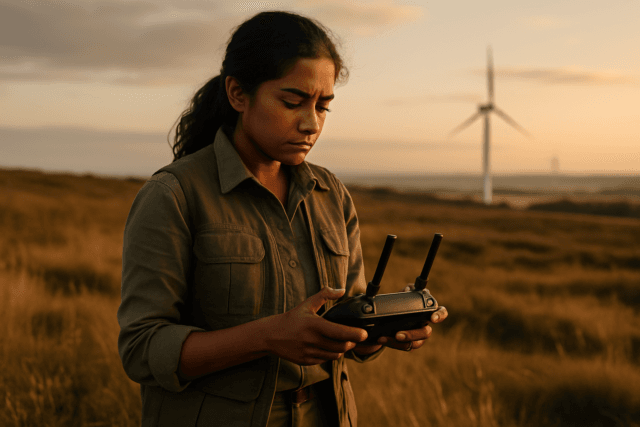With the rise in popularity of drones for photography and videography, understanding the licensing and regulations surrounding their use is crucial. This article provides a comprehensive guide to drone photography licensing in the UK, covering the essential requirements, certifications, and rules you need to know to fly legally and safely.
Understanding UK Drone Laws in 2025
The UK’s drone laws are primarily governed by the Civil Aviation Authority (CAA). As of 2025, the CAA has updated and simplified many of the rules to promote safety and innovation within the drone sector. Here’s a breakdown of what you need to know:
Key Regulatory Changes
Registration: If you own or are responsible for a drone or model aircraft weighing 250g or more, or any drone equipped with a camera (unless it’s classified as a toy), you must register with the CAA before flying outdoors.
Flyer ID: Anyone who will be flying a drone that is 250g or above must obtain a Flyer ID by passing an online theory test. The Flyer ID demonstrates an understanding of the drone code.
Operator ID: The person or organisation responsible for the drone must register for an Operator ID.
Remote ID: The CAA is implementing Direct Remote ID requirements, meaning drones will need to broadcast identification and location data. All drones over 100 grams with a camera must have a remote ID.
Product Standards: The CAA is introducing UK-specific product markings for class-marked drones, replacing the EU’s C0, C1, C2, etc., with UK0, UK1, UK2, etc. The CAA will recognise the C1 labels for two years from January 2026 to January 2028.
Recreational vs. Commercial Use
The UK no longer differentiates between commercial and recreational drone flights in terms of basic legal requirements. However, commercial operators have additional requirements such as insurance.
Licenses, IDs, and Authorizations
Flyer ID
To legally fly a drone in the UK, you need a Flyer ID, which you obtain by passing an online theory test.
- Requirements: Anyone 13 or older can get a Flyer ID. Children under 13 require parental assistance.
- Validity: A Flyer ID is valid for five years.
- Test Details: The online theory test consists of 20 multiple-choice questions. You need a score of 16/20 to pass and can retake the test as many times as necessary.
Operator ID
If you are responsible for a drone, you need to register for an Operator ID.
- Requirements: You must be 18 or over to register as an operator.
- Registration: Registration costs £11.13 annually.
- Labeling: All drones must be labeled with the operator’s unique Operator ID number.
A2 Certificate of Competency (A2 CofC)
The A2 CofC is a qualification that allows you to fly certain drones closer to people without needing an Operational Authorisation from the CAA.
- Eligibility: This is suitable for pilots flying drones under 2kg (and over 250g).
- Training: You’ll need to complete an A2 CofC training course and pass a theory examination with a CAA-approved drone training school.
General Visual Line of Sight Certificate (GVC)
The GVC allows you to apply for an Operational Authorisation, which is required for more complex operations.
- Requirements: Completing an online theory course, passing an online invigilated examination, creating an Operations Manual, and passing a Flight Examination.
- Operational Authorisation: Once you have your GVC, you can apply to the CAA for an Operational Authorisation, which costs £253 annually.
Drone Categories and Subcategories
The CAA categorizes drone operations to define the rules and requirements for each type of flight. These categories are based on the level of risk involved.
Open Category
The Open Category is for lower-risk operations and is further divided into subcategories:
- A1 (Flying Over): Allows flying over uninvolved people with C1 drones (up to 900 grams).
- A2 (Flying Near): Requires maintaining a minimum horizontal distance from people; may require an A2 CofC.
- A3 (Flying Far): Requires flying far from people.
Specific Category
The Specific Category covers operations that present a higher risk than those in the Open Category. To operate in this category, you typically need an Operational Authorisation from the CAA.
Certified Category
The Certified Category is for the highest-risk operations, such as transporting people or dangerous goods. This category requires stringent certification and oversight.
UK Drone Laws and Regulations
Several specific regulations govern drone operation in the UK:
- Registration and Education:
- If your drone is over 100g and has a camera, you need both a Flyer ID and an Operator ID.
- The CAA is simplifying drone documents and providing guidelines in one document for easier compliance.
- Geo-Awareness and Geo-Fencing:
- The CAA requires geo-awareness and geo-fencing capabilities from drone manufacturers, preventing flights in restricted zones.
- Drone Class Markings:
- The UK is introducing its own class markings (UK1, UK2, etc.) similar to the European C1, C2, etc.
- The CAA will recognise C1 labels for two years from January 2026.
- Remote ID:
- All new drones sold after January 1, 2026, must have active Direct Remote ID.
- All drones must have Direct Remote ID by January 1, 2028.
Key Considerations for Drone Photography
Privacy and Data Protection
- It is legal to take photographs in public places, but the use of those images needs careful consideration.
- If you plan to sell or profit from pictures of identifiable people, you need their consent.
- Be sensitive when photographing children and ensure you have parental consent.
Safety and Operational Guidelines
- Visual Line of Sight: All flights must be within visual line of sight of the operator.
- Restricted Areas: It is illegal to fly a drone in or around an airport with a flight restriction zone without permission from air traffic control or the airfield operator.
- Congested Areas: Flying in congested areas (towns, cities, industrial or recreational areas) requires further training and adherence to specific weight limitations.
- Landowner Permission: Always seek permission from the landowner to take off and land a drone.
Steps to Getting a Drone License for Photography in the UK
- Register with the CAA: Register as a drone operator and get your Operator ID.
- Obtain a Flyer ID: Pass the online theory test.
- Complete a Drone Pilot Training Course: For commercial operations or flying in the Specific Category, enrol in a certified training course.
- Pass the Theory Exam: Pass the CAA’s multiple-choice exam on the Drone and Model Aircraft Code.
- Apply for a Commercial Permit: Apply for Permission for Commercial Operation (PfCO) or the Operational Authorisation under the Specific Category.
Required Documents
- Proof of Identity: Passport or ID.
- Drone Details: Information about your drone, including its serial number, weight, and camera details.
- Operator ID: Your legal requirement as the person responsible for the drone.
- Flyer ID: Proof that you understand the rules of flying a drone safely.
Costs
- Operator ID Registration Fee: £11.13 annually.
- Flyer ID: Free.
- Commercial Training: Varies depending on the training provider.
- Operational Authorisation: £253 annually.
Additional Permissions and Considerations
- Forestry England: You need a permit from Forestry England to fly a drone in any of the nation’s forests, whether for recreational or commercial purposes.
- Filming Permissions: When filming with a drone, you need permission from the landowner for commercial filming activity.
Recent Updates and Changes
The CAA is continually updating drone regulations. Notable changes from May 8, 2025, include:
- Simplified Rules: Clearer rules for drone operations, including renaming sub-categories in the ‘Open’ category to improve clarity.
- Increased Education: Extending mandatory Flyer ID training to users of drones over 100g.
- Product Standards: Introducing drone product standards via class-marking to improve safety and security.
- Remote ID: Implementing Direct Remote ID requirements to enable drones to broadcast identification and location data.
Resources
- Civil Aviation Authority (CAA): The primary source for all official guidance and regulations regarding drone operations in the UK.
- NATS (National Air Traffic Services): For information on restricted airspace.
- ARPAS-UK: A trade association for the remotely piloted aircraft systems industry in the UK.
- Film London: Provides guidance for filming with drones in London.
Understanding and adhering to drone photography licensing and regulations is essential for safe and legal operation in the UK. By following the guidelines and staying updated with the latest changes, you can enjoy the benefits of drone photography while ensuring the safety and privacy of others.

